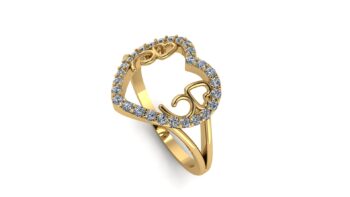When it comes to colored gemstones, we have a lot of customers who want something different than the status quo and our response is almost always one of the Phenomenal Gemstones. What are those? They are a group of gems that display a visual phenomenon not seen in normal gems. These gemstones can be grouped into 8 categories, which are typically named by the phenomenon they show. The gem species with the most phenomenal traits in it is Feldspar. However, there are a few other species that also have phenomenal gems in their family. In this post, we will discuss the 5 categories of phenomenal gems and give some examples of each.
Asterism
Asterism is a fascinating optical phenomenon seen in gemstones where a star-shaped pattern appears when light is reflected on the surface. This effect is caused by the presence of needle-like inclusions within the stone. Some well-known examples of gemstones that exhibit asterism include star sapphires, which display a six-rayed star when cut in cabochon, and star rubies, known for their crimson hue and intersecting star pattern. Other notable stones showcasing asterism are star diopside, star garnet, and star rose quartz.
Gem enthusiasts often appreciate the unique beauty of asterism in stones, as it adds a captivating allure to jewelry pieces. Star sapphires, in particular, are highly sought after for their mesmerizing star patterns that seem to shimmer and dance when exposed to light. Star rubies, with their deep red color and distinct star shape, are also prized for their rarity and visual appeal. Whether in the form of pendants, rings, or earrings, gemstones displaying asterism are sure to capture attention and spark admiration.
In addition to their aesthetic value, gemstones with asterism are believed to possess metaphysical properties by some cultures. Star sapphires, for instance, are thought to bring good luck and protection to the wearer, while star rubies are associated with vitality and passion. Whether you are drawn to these stones for their visual allure or symbolic meanings, exploring the world of asterism in gemstones can lead to a deeper appreciation for the wonders of nature and the artistry of lapidary craftsmanship.
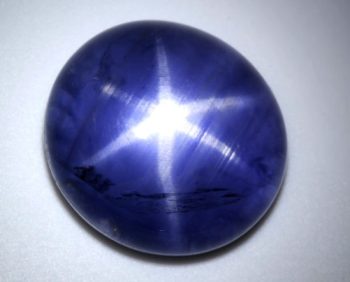
Adularescence
Adularescence is the optical phenomenon where a gemstone exhibits a milky, bluish light that seems to move across the surface when the stone is rotated. This effect is caused by light scattering from microscopic inclusions or structural anomalies within the gemstone. Moonstone is the only example of a gemstone that displays adularescence.
Moonstone is a captivating gemstone known for its unique appearance and mystical properties. It is a type of feldspar mineral that exhibits a shimmering adularescence, giving it a milky appearance with a soft blue sheen. Moonstone is often associated with intuition, balance, and new beginnings, making it a popular choice for jewelry with spiritual significance.
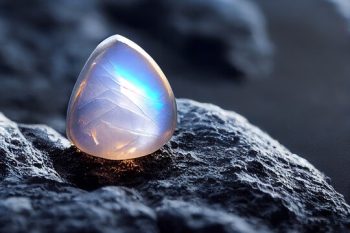
Chatoyancy
Chatoyancy is a fascinating optical phenomenon seen in certain gemstones. This effect, also known as the “cat’s eye effect,” is characterized by a band of light that moves across the surface of the stone when it is turned. This shimmering effect is caused by the reflection of light on parallel inclusions or fibers within the gemstone.
One classic example of a stone that exhibits chatoyancy is tiger’s eye. This beautiful gemstone, with its golden to red-brown color and silky luster, displays a captivating chatoyant band that resembles the eye of a cat. Another well-known stone that showcases chatoyancy is chrysoberyl, specifically the variety known as cymophane or cat’s eye chrysoberyl. This gemstone displays a striking milky or opalescent band of light that glides across its surface.
Other notable examples of stones that display chatoyancy include hawk’s eye, apatite, and scapolite. Each of these gemstones exhibits a unique play of light that adds depth and intrigue to their appearance. Whether in jewelry or as part of a gemstone collection, these chatoyant stones never fail to captivate with their mesmerizing optical effects.
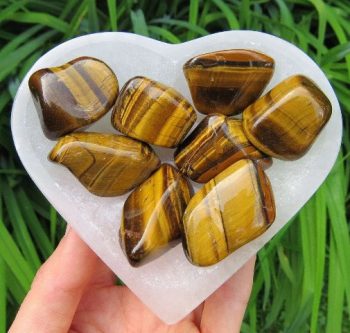
Aventurescence
Aventurescence is a phenomenon where a mineral or stone exhibits a sparkling effect. This effect is caused by the presence of reflective inclusions within the stone, such as mica or hematite. When light hits these inclusions, it creates a shimmering or glittering appearance, adding a unique and eye-catching quality to the stone.
Several stones are known for displaying aventurescence. One popular example is aventurine, a form of quartz characterized by its green color and metallic sheen caused by inclusions of fuchsite or hematite. Another well-known stone exhibiting aventurescence is sunstone, which features a bright, reflective effect due to the presence of hematite or goethite inclusions. These stones are often used in jewelry making to add a touch of sparkle and elegance to various pieces.
In addition to aventurine and sunstone, other stones that can exhibit aventurescence include moonstone, labradorite, and tiger’s eye. Each of these stones showcases a unique play of light and color, making them popular choices for jewelry enthusiasts and collectors alike. Whether in the form of beads, cabochons, or faceted gemstones, aventurescent stones continue to captivate with their mesmerizing beauty and charm.
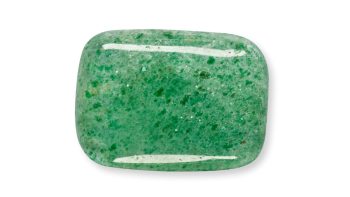
Iridescence
Iridescence is a phenomenon where surfaces display a colorful sheen that changes with the angle of view. This optical effect is caused by the interaction of light with a material’s surface structure. Examples of stones that exhibit iridescence include ammolite and fire agate.
Ammolite and fire agate are two stunning gemstones that captivate with their unique beauty. Ammolite, formed from the fossilized shells of ammonites, displays a mesmerizing array of iridescent colors, making each piece truly one-of-a-kind. On the other hand, fire agate, with its fiery flashes of red, orange, and gold, is known for its striking appearance reminiscent of flickering flames. Both gemstones are prized for their rarity and distinctive visual appeal.
Ammolite is primarily found in southern Alberta, Canada, and is celebrated for its vibrant hues that shift and change when viewed from different angles. This gemstone is believed to carry the energy of the earth, promoting healing and prosperity. Fire agate, on the other hand, is mainly sourced from locations such as Mexico and the southwestern United States. Its fiery colors are thought to ignite passion and creativity in those who wear it, making it a popular choice for jewelry enthusiasts seeking a bold and dynamic look.
Whether you are drawn to the mystical allure of ammolite or the fiery intensity of fire agate, both gemstones offer a unique and enchanting addition to any jewelry collection. With their rich histories and captivating aesthetics, these gemstones are sure to leave a lasting impression and spark conversations wherever they are worn.
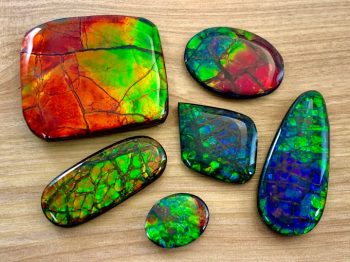
Labradorescence
Labradorescence is a captivating optical phenomenon seen in minerals like labradorite. This unique effect causes the stone to display a colorful play of iridescence when viewed from different angles. Labradorite, a feldspar mineral, is known for its striking appearance with hues of blue, green, gold, and sometimes even purple. The iridescence in labradorite is a result of light interference within the stone’s structure, creating a mesmerizing display of colors.
Labradorite is a popular gemstone used in jewelry making and is highly sought after for its labradorescent properties. The stone is believed to possess mystical and metaphysical properties, with some cultures considering it a powerful protective talisman. In addition to its aesthetic appeal, labradorite is also valued for its alleged healing properties, such as promoting clarity of thought and enhancing intuition. Whether worn as jewelry or used for its metaphysical properties, labradorite continues to fascinate and enchant admirers worldwide.
Overall, labradorescence and labradorite offer a unique and enchanting experience for those who appreciate the beauty of natural gemstones. With its iridescent display of colors and purported metaphysical properties, labradorite stands out as a versatile and captivating stone in the world of jewelry and crystal healing. Whether you’re drawn to its aesthetic appeal or intrigued by its mystical qualities, labradorite is sure to leave a lasting impression with its mesmerizing play of colors and rich cultural history.
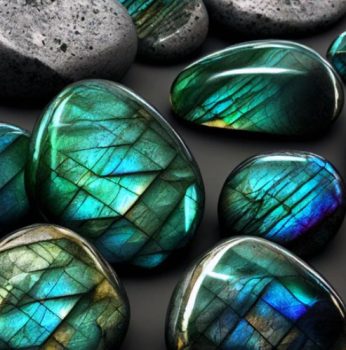
Play Of Color
Play of color in opals, also known as opalescence, is a unique optical phenomenon that causes the gemstone to display a spectrum of colors when viewed from different angles. This captivating effect is a result of the diffraction of light as it passes through the tiny silica spheres that make up the structure of opals. The colors seen in opals can range from vibrant reds, oranges, and yellows to soothing blues, greens, and purples, making each opal a truly one-of-a-kind gemstone.
Opals are classified into two main categories based on their play of color: precious opals and common opals. Precious opals exhibit a distinct play of color, with patterns that can include pinfire, harlequin, and broad flash. These opals are highly valued for their unique beauty and are often used in fine jewelry pieces. On the other hand, common opals do not display a play of color and are typically opaque or translucent in appearance. This renders them more affordable and accessible to a wider range of consumers.
When choosing an opal, it is important to consider the play of color as a key factor in determining the gemstone’s quality and value. The intensity, variety, and distribution of colors within the opal can greatly impact its overall beauty and desirability. Whether you are drawn to the fiery reds of a black opal or the tranquil blues of a crystal opal, the play of color in opals adds a magical element that makes each gemstone a true work of art.
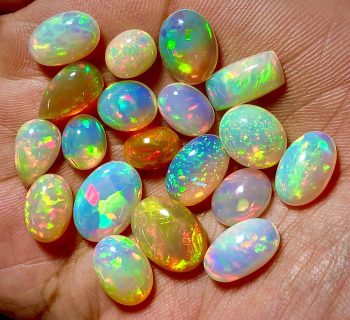
Color Change
Color Change gemstones are a unique category of gems that exhibit a fascinating phenomenon of changing color under different lighting conditions. This optical effect is caused by the presence of trace elements within the gemstone’s structure. Some popular examples of Color Change gemstones include Alexandrite. It shifts from green in daylight to red under incandescent light. Fluorite, known for changing from blue under natural light to purple under artificial light. Color change gemstones are highly sought after for their mesmerizing beauty and rarity in the world of gemology.
Alexandrite is a remarkable Color Change gemstone that is highly prized for its striking color transformation properties. This gemstone was first discovered in Russia in the 19th century. It is known for its vivid green hue in daylight, which transforms into a rich red or purplish color under incandescent light. Another notable example is Fluorite. It is a colorful gemstone that can change from a deep blue or violet shade under natural light to a vibrant purple or pink color under artificial lighting. These unique color-changing characteristics make Color Change gemstones like Alexandrite and Fluorite highly desirable for jewelry enthusiasts and collectors alike.
In addition to Alexandrite and Fluorite, other popular Color Change gemstones include Garnet, Sapphire, and Spinel. Garnet gemstones can exhibit a color shift from a greenish hue in daylight to a reddish tone under incandescent light. Sapphires, known for their durability and brilliance, can also display color changes from blue to violet or purple. Spinel gemstones, with their wide range of colors, can undergo transformations from grayish-blue in daylight to vibrant pink or red under artificial light. These unique optical properties of Color Change gemstones continue to captivate gemstone enthusiasts and collectors worldwide.
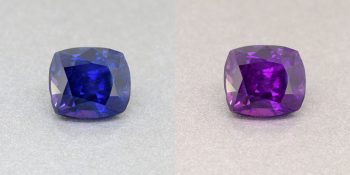
Why We Love Phenomenal Gemstones
Phenomenal gemstones have captivated jewelry enthusiasts for centuries. Their rarity and distinctive beauty make them highly sought after by collectors and jewelry connoisseurs alike. The allure of phenomenal gemstones lies in their ability to create a sense of wonder and fascination, adding a touch of magic to any piece of jewelry they adorn.
One of the most beloved aspects of phenomenal gemstones is their versatility in design. Whether set in a classic solitaire ring or incorporated into a modern statement necklace, these gems never fail to make a striking impression. Their ethereal glow and ever-changing colors add a dynamic element to any custom earrings, fashion rings, or delicate customized pendants, elevating it to a work of art. Jewelry designers often seek out these exceptional gemstones to create one-of-a-kind pieces that showcase their unique optical properties.
Beyond their aesthetic appeal, phenomenal gemstones also hold symbolic meanings and metaphysical properties for many wearers. Some believe that these gems possess healing energies or bring good luck and protection to the wearer. Whether chosen for their beauty, rarity, or perceived metaphysical benefits, phenomenal gemstones continue to hold a special place in the hearts of jewelry lovers around the world.
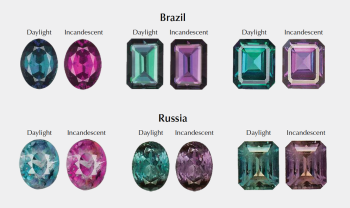
Cons Of Some Phenomenal Gemstones
Phenomenal Gemstones, while often admired for their beauty and rarity, can come with their own set of drawbacks. Some phenomenal gemstones, such as opals and pearls, are known for their delicate nature. These stones can be easily scratched or damaged, requiring extra care and attention when handling or wearing them. Additionally, certain gemstones may require special cleaning methods to maintain their luster. This makes them more high-maintenance than other types of jewelry.
Another downside of some phenomenal gems is their susceptibility to discoloration or fading over time. Exposure to sunlight, chemicals, or even certain skincare products can cause these gemstones to lose their original color or brilliance. This means that owners of such gemstones need to be cautious about how and where they wear them to prevent any unwanted changes in appearance. Regular maintenance and proper storage are essential to preserve the beauty of these gemstones.
Furthermore, some phenomenal gemstones can be quite expensive to acquire and maintain. The rarity and unique qualities of these stones often result in higher price tags compared to more common gemstones. Additionally, specialized care, such as professional cleaning or repairs, may also come at a premium cost. As such, individuals considering purchasing phenomenal gemstones should be prepared for the investment required not only in buying the stone but also in its long-term care and upkeep.


